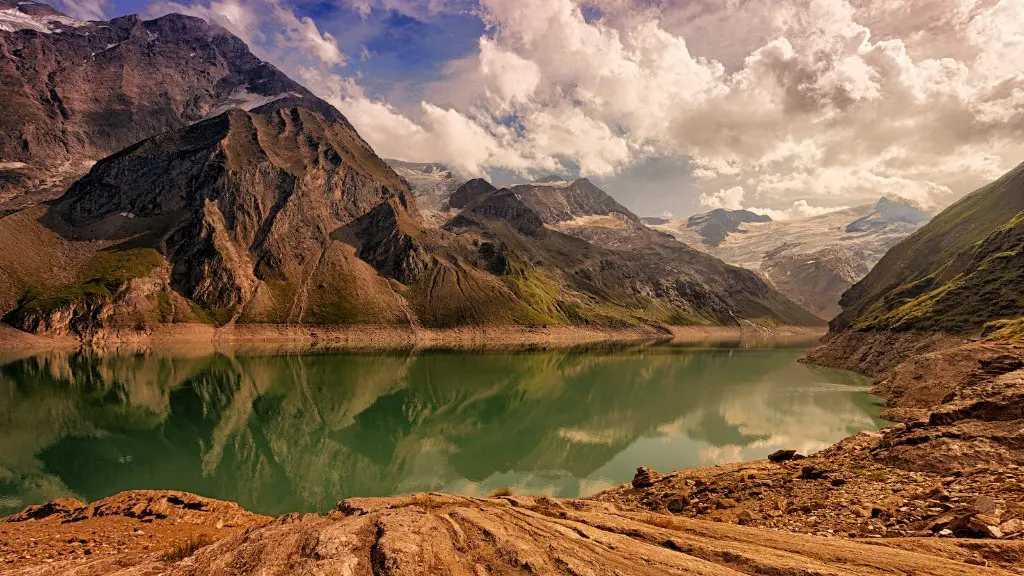Background Information
In the U.S., the Mississippi River is one of the largest rivers in the world, flowing through 10 states from Minnesota to Louisiana. It’s powerful topography and its rich history of human settlement along its tree-lined banks forms the basis of America’s rich agricultural sector, supporting rural communities and providing goods, goods and commodities to cities. Since the industrial revolution, however, the Mississippi River has become increasingly prone to flooding.
Causes Of Flooding
The primary cause of flooding along the Mississippi River is excessive precipitation. During the summer months, rainfall can exceed the capacity of the Gulf of Mexico to hold the extra water, resulting in riverine flooding. Additionally, melting snow and ice in the northern states of the river’s watershed can contribute to the increased water level, making Mississippi floods especially dangerous in the spring and early summer.
Climate change has also been blamed for an increase in the severity and frequency of flooding on the mighty Mississippi. Temperature increases in the river’s higher-altitude regions have caused faster snow melt, sending more melt water into the river. As temperatures climb, increased evaporation accelerates the process, as well as contributing to soil erosion and land subsidence.
Human Impact
Humans have also impacted the flooding of the Mississippi River in myriad ways. Sediment accumulation, overexploitation of groundwater and infrastructural changes such as channelization, dams and levees have all contributed to an increased risk of flooding. Additionally, deforestation has reduced the ability of the soil to absorb moisture, leading to a greater potential for flooding.
Environmental Impact
The floods of the Mississippi River are not only a danger to human life, but also to the environment. Floods can cause a loss of soil fertility and an increase in erosion, disrupting local ecosystems and harming wildlife. Invasive species such as zebra mussels and Asian carp have also been known to become more widespread during flooding events. Additionally, chemical pollutants from upstream factories, agricultural runoff and sewage have been known to contaminate downstream areas with hazardous materials.
Mitigation Efforts
The US Army Corps of Engineers has developed several ways to mitigate the risk of flooding on the Mississippi River. These include creating dams, levees, floodwalls and spillways to control the flow of water, as well as establishing wetland reserves to hold back floodwaters. Additionally, the government has implemented a number of regulations to protect the environment and prevent further flooding, such as a ban on certain farming and forestry practices in areas prone to flooding.
Concerns And Criticisms
The effectiveness of some of these efforts has been questioned by environmentalists and other concerned parties. Some fear that the construction of new levees and dams could lead to the displacement of wildlife and disrupt the balance of the natural ecosystem. Additionally, there is also concern that regulations restricting certain farming and forestry practices could negatively impact the livelihood of local communities.
Preparedness
In order to be prepared for floods on the Mississippi, local governments must take a proactive approach to mitigation. Investing in infrastructure such as levees, dams, pumping stations and floodwalls will allow communities to better contain floodwaters and limit the damage done. Additionally, local communities should develop and implement evacuation plans, as well as establish emergency shelters and communication networks.
Reforestation
Another important element of flood preparedness is reforestation. Until recently, deforestation has been a major factor in Mississippi River flooding. Trees act as natural barriers, helping to absorb and retain water during periods of excess precipitation. Planting trees can reduce the impact of flooding, as well as provide additional benefits such as cleaner air, improved soil fertility and deforestation control.
Final Thoughts
The flooding of the Mississippi River brings with it significant economic and environmental losses. To mitigate the impact of these floods and make communities along the river more resilient, communities should invest in infrastructure, develop evacuation plans and promote reforestation. By taking action, communities can ensure the safety and well-being of their citizens and protect the health of the environment.


